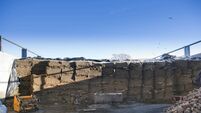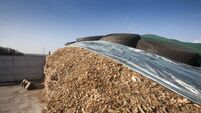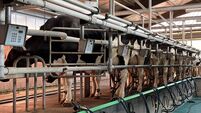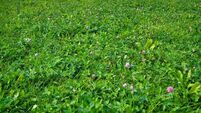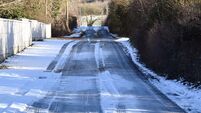Getting an early handle on your silage quality

After such an unusual grass-growing year, there is plenty of variability in silages saved.
I have been testing a good few 2023 grass silage samples recently. Mainly for dairy herds who have begun buffering spring calves and also for autumn calving herds to formulate fresh diets with cows going in by night. In both scenarios, it is important to give cows good quality silages to maintain performance and complement Autumn grass.
After such an unusual grass-growing year, there is plenty of variability in silages saved. Quality varies around the country and unfortunately, there seems to be an amount of substandard material in yards. Obviously, the feed value of this year’s silage has been significantly influenced by the weather we had in April and May, along with the very poor July. Some were lucky to cut in late April or Early May and have great feeding saved while others ended up with a very late first cut and the knock-on has been a poor 2nd cut too.
When you get your silage results back what figures do you look for?
- Most will look for the DMD, but there are far more important figures to look for.
- The pH of silage along with the lactic acid content are the main indicators of preservation
- The pH for well-preserved silage will be between 3.8 and 4.2.
- Pit silage should have a lactic acid of 75 plus.
- The Dry Matter of your silage determines the amount of fresh feed that animals can consume.
- This helps you to establish how much you should offer each day.
- The M.E. or UFL are the values used to indicate the energy content.
- Energy is what creates meat and milk in ruminants.
- Protein is essential for healthy, productive animals and encourages intake.
- Many grass silages are again low in protein this year and this should be taken into consideration when balancing diets correctly this winter.
- Ash content indicates the presence or not of clay in the sample
As is the case most years, many of this year’s silages are either too dry or very wet. Over wilting continues to be an issue and this was particularly the case for 2nd cuts taken in very dry weather. Dry silages are very difficult to preserve and are often a source of moulds and toxins. A pH greater than 4.4 is very common in these dry silages. Excessively dry silages with high pH’s will take very careful management in the pit as spoilage once the air hits it will be rapid. Moulds and toxins if they enter an animal’s digestive system will cause poor performance as they inhibit the population of good bugs in the rumen. A good sharp shear grab will be essential if this type of silage is to be managed well. Removing this with a loader bucket has the potential to increase losses at feedout and increase production costs. Silage is expensive to produce never mind wasting it due to poor pit management
Wet silages as were saved between the showers in late May and early June also provide significant challenges. It is very difficult to get animals to consume sufficient quantities of Dry Matter from wet silage. Wet silages are generally heavily loaded with acids and as well as depressing appetites can induce acidosis.
Another issue being observed is high ash contents, indicating that either the mower or rake is too tight to the ground.
With both wet and dry silages it will be best practice to feed it fresh each day to minimise waste in storage and at the feed trough. Animals will eat fresh feed better than stale material. Managing intakes is the best way to manage animal output.
Try to establish the quality of each silage you have made this year and then you can decide which animals get which silage. If you are milking cows, they must always get your best silage post-calving. If you have beef stock, then the animals being finished should get your best silage. Until you test the silages you don’t know which feed is your best. It's not just about when you cut it, but also how it's managed and the age of the sward.
Keeping your best silage for your most productive animals will keep production costs under more control.

